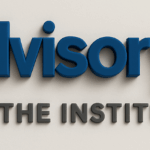Not really, but digitization and robotics will displace roles involving repetitive tasks and related management roles within organizations choosing to automate, implement artificial intelligence (AI), deploy robotics, and leverage machine learning. The secret is to recognize the shift and how you can predict a career path for yourself.
Drop the Alarm and Start Planning
The progress of technology always has, and always will, find ways to displace roles in the workplace. For centuries, technology has been killing jobs from bematists in ancient Greek times (folks who measured distance by taking steps) to modern warehouse automation. The critical factor in understanding here is that many new positions are conceived out of the same technical advancements displacing those roles.
It’s not like we didn’t know it was possible, but a surge is occurring by the convergence of multiple technological advances that have accelerated progress toward more and more automation. Your responsibility is to be prepared for when a wave of advancements inevitably hits your industry. That’s right; you need to do a bit of predictive analysis of your own and then get proactive.
Okay, So What About My Role?
In the light of technical disruption, it is essential that you avoid fighting against the adoption of technologies eating up your role. While many falsely believe the unique skills brought to their repetitive jobs cannot be replicated or automated, many can.
Rather than denying or fighting displacement, be proactive in following industry trends to ensure you acquire or hone the skills needed for upcoming roles in your industry. For instance, let’s talk about my pal Adam (not his real name.) He’d convinced himself that his visual identification of part anomalies in industrial engines was irreplaceable. Not so.
The combination of AI, deep learning, and multispectral camera technologies puts his role at risk. He believes the addition of this automation is in the not-too-distant future, but he now knows it’s coming. Performing a specialized function in his industry puts the whole role, industry-wide, on alert for replacement. He will be like the wagon wheel maker in the car industry, or the front-line service desk call agent being replaced by a chatbot.
All he can think about is the famous line from Star Trek, “resistance is futile.” The AI invasion is coming! Time to take a clear look at his existing competency and identify where he might leverage his skills to remain relevant.
Managers, if you feel the push for the displacement of an entire department, this may be for you.
Coaching your team in career development and relevance to the business is never a bad idea.
Building A Plan
Adam needs to build his plan for relevance in the organization, starting in this order:
- A clear understanding of the different technology trends impacting his industry and his particular role
- An evaluation of how to leverage human traits to discover the new and emerging jobs that support those trends
- Find ways to participate in valued business transformation efforts for the organization
The Trends
AI and intelligent cameras significantly impact quality control (QC) within industrial settings, with deep learning displacing the need for many QC specialists.
This insight was news to Adam. Working diligently at his craft and not chasing the industry trends blindsided him. He needs to act fast to learn precisely how his job will change. While not technically trained in AI, Adam has a mathematical brain capable of understanding the basics. To become a key contributor to the upcoming changes, he must research and learn what work specifications would contribute to training an AI model. Adam’s skills lay in identifying subtle variables and imperfections for engine parts’ quality and fit. To be a significant contributor to any upcoming change, he can begin by documenting nuances, anomalies, and quality details.
If it feels counter to Adam’s interests to work on the side of role replacement, stick with me – there is a method to my madness. Through performing research on AI models, Adam will benefit any incoming vendor with information related to his role. He will undoubtedly discover that the AI model must be retrained each time the dataset receives a new rule.
Time for Role Reinvention
Eureka! A potential role. The technology still needs someone on the inside to work with the specialists in ensuring a smooth transition, and it’s possible to carve out a position to be the valuable person who defines the rules each time a new part supplier comes on board or the product changes. At this point, Adam will evaluate his very human traits and apply them to the company’s benefit.
A Better Job Than Before
Every department connects to the business via a value chain of offerings. In a case like Adam’s, his role may become obsolete, but the change makes room for new specialties that align with a brand-new value chain. Carving out a new role for yourself takes foresight and planning. Like Adam, it’s essential to get out of your head, never rest on your laurels, and be willing to learn with an open mind.
When you get out of your comfort zone, you step into new challenges with exciting learning opportunities that might be even better than the job you wanted to protect.
Watch for my second article, Why We Still Need Humans, in this 2-part series to learn more about Adam’s specific steps to carve out a new role and show his value to the business.
Tag/s:AutomationBusiness TransformationDigital Disruption






Trackbacks/Pingbacks